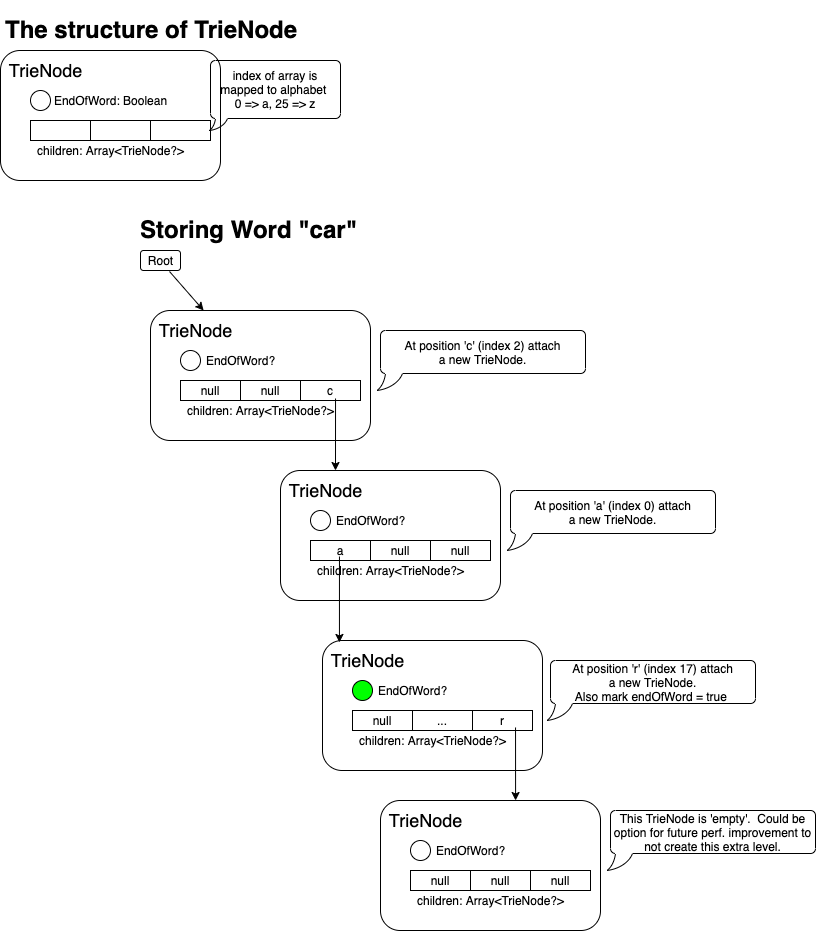An experiment in two areas:
- learning Kotlin
- learning Trie data structure
Creating a trie and adding a word and checking for existence.
val myTrie = TrieNode()
myTrie + "hello"
if ("hello" in myTrie) println("world")Adding multiple words to a trie.
val myTrie = TrieNode()
myTrie + "hello" + "world"
if ("hello" in myTrie && "world" in myTrie) println("hello world")Removing words from a trie.
val myTrie = TrieNode()
myTrie + "hello"
myTrie - "hello"
if ("hello" !in myTrie) println("goodbye")More examples in the unit test. Also tracking issues/features to add in TODO
Example of storing the words (end of word markers not shown yet):
val root = TrieNode()
root += "alpha"
root += "at"
root += "alps"
root += "bee"
root += "been"
root += "bean"
root += "beast"
root += "bernie"Diagram of TrieNode structure.

Started with exploring leetcode via Kotlin. The first problem that was presented I attempted in a brute-force manner and then found two issues:
- was too slow - figured as much
- the version of Kotlin available on leetcode at the time is 1.3 (I'm writing in 1.5.x) and was difficult to keep code compatible.
Regardless, the problem was about efficient searching for words via prefix/suffix patterns. It seems that a Trie structure might help here.
I had found an article (misplaced it now) prior to this which hinted that engineers should try to develop a few common solutions to improve/round-out their skills. One was a text editor and mentioned Trie and Rope data structures. So, I figured let's try the Trie first.
- TODO: find that missing article 😀
- https://en.wikipedia.org/wiki/Trie
- https://medium.com/basecs/trying-to-understand-tries-3ec6bede0014
